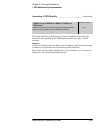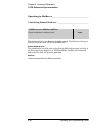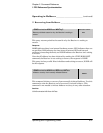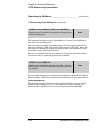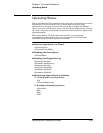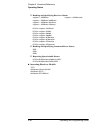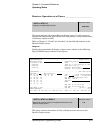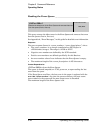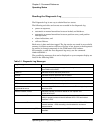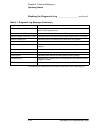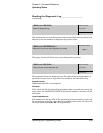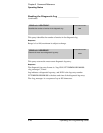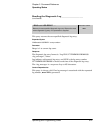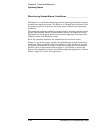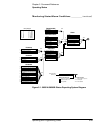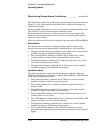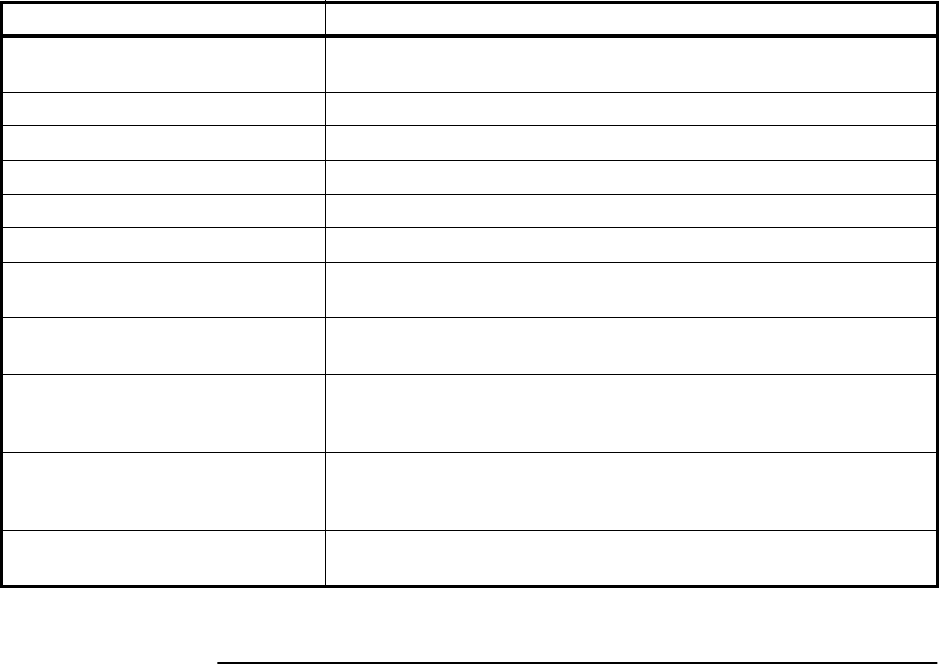
Chapter 5 Command Reference
Operating Status
Operating and Programming Guide 5-43
Reading the Diagnostic Log ______________________________
The Diagnostic Log is one way to obtain Receiver status.
The following activities and events are recorded in the diagnostic log:
• power-on sequence,
• automatic or manual transitions between locked, and holdover,
• automatic or manual transitions between position survey and position
hold operation,
• alarm indications, and
• self-test failures.
Each entry is date-and-time tagged. The log entries are stored in non-volatile
memory so all data remains valid even if power is lost. Access to the diagnostic
log entries is through commands in the :DIAGnostic:LOG subtree.
For example, to read the first diagnostic log entry, use the command
:DIAG:LOG:READ? 1
The possible log messages that can be displayed on your computer display are
listed in the following table.
Table 5-1. Diagnostic Log Messages
Log Message Comments
Log cleared Always becomes first log message when the log is cleared.
See :DIAG:LOG:CLEAR.
Power on Indicates Receiver has been powered on.
Re-boot Indicates Receiver processor has re-booted.
Survey mode started Indicates beginning of survey for position.
Position hold mode started Indicates transition from survey to position hold.
GPS lock started Indicates transition into locked operation.
GPS reference valid at
yyyymmdd.hh:mm:ss
Indicates when GPS reference first become valid. Time in log is the present
time from GPS.
Holdover started, manual Indicates transition to holdover based on user request. See
:SYNC:HOLD:INIT.
Holdover started, TI error Indicates transition to holdover due to problem detected with Receiver
ability to properly measure interval between GPS 1 PPS and internal
oscillator 1 PPS.
Holdover started, TI limit exceeded Indicates transition to holdover due to the interval from GPS 1 PPS to
internal oscillator 1 PPS exceeding a limit threshold for numerous
measurements.
Holdover started, not tracking GPS Indicates transition to holdover since GPS is not tracking sufficient
satellites.



